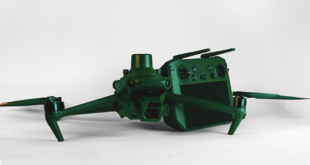The FAA reports that there are now over 100,000 licensed commercial drone operators in the U.S. While the numbers come from the U.S., it’s an international trend: across Europe, Africa, Asia, and South America growth in licensed pilots is commensurate. We spoke to industry leader Amit Ganjoo, founder and CEO of drone tech company ANRA, about what that means for the drone industry.
The Ecosystem is Building Critical Mass.
ANRA has been part of so many technology and regulations projects – stemming from their work on UTM and sensor data with NASA and others – that we’ve lost count. But the fact that there are so many different agencies and projects working to solve problems like Unmanned Traffic Management, communications, command and control, and detect and avoid means that the entire drone ecosystem is reaching critical mass. “UTM isn’t one product,” Ganjoo comments. “It’s an entire system: including technology solutions, infrastructure, and regulation. ”
“I’m a certified pilot, as are many of my colleagues. I was a sport airplane pilot first: many of us in the drone industry started with that passion for aviation. The fact that there are 100,000 certified remote pilots in the U.S. alone means that the number of people committed to working within the drone ecosystem is huge, and growing.”
Technology is Driving Value: Value is Driving Industry Adoption.
ANRA launched in 2016, only 2 years ago – but that’s a lifetime of progress and development in the drone industry. Progress in regulations has occurred alongside major technology developments: longer flight endurance, better sensors, excellent flight automation, AI tools and sense and avoid have made the value compelling for large industries like energy, construction, and insurance. “In some very traditional verticals, drones have become almost a given for certain functions,” says Ganjoo. “That’s only going to continue as the tools get better – large enterprise has to use all of the tools available to stay competitive.”
More verticals are adopting drone programs, and the technology is keeping up – or running ahead. In the last two years, the idea of flying one drone to take real estate photos has evolved into adoption by large enterprise requiring a host of new tools like airspace intelligence, fleet management, command and control, and data storage and management.
In Some Cases, the International Market is Showing the Way.
“The drone industry in the U.S. is absolutely aware of what’s happening overseas,” says Ganjoo. “In some cases, international markets are showing the way: where regulations allow things like BVLOS flight and other applications more easily, there’s more industry adoption.”
“Right now we’re working with some clients in India: those clients will help to provide use cases and value measurements for similar industries in the U.S., as regulations evolve.”
Regulation is Happening – Quickly.
That regulation is happening quickly: for better or for worse. “It’s definitely an active landscape right now,” says Ganjoo. The rapid growth of drones in the sky has made drones a hot topic in both federal and state regulations. Programs like the IPP are helping to inform local lawmakers: but a lack of education is still a problem. “It’s the industry’s responsibility to take a role in educating lawmakers, and the public,” says Ganjoo. “Regulators need to know about the benefits and economic potential of the industry – which can far outweigh the risks, especially as technology and infrastructure develops.”
100,000 licensed pilots in the U.S. in only two years is an indication that the drone industry continues to meet – and sometimes exceed – growth targets. But as fast as the industry is developing, we still have a long way to go. Pilots, technology partners, lawmakers and enterprise adopters will need to work together to ensure that the infrastructure and regulations that are put in place support – rather than limit – the drone industry’s potential.
Miriam McNabb is the Editor-in-Chief of DRONELIFE and CEO of JobForDrones, a professional drone services marketplace, and a fascinated observer of the emerging drone industry and the regulatory environment for drones. Miriam has a degree from the University of Chicago and over 20 years of experience in high tech sales and marketing for new technologies.
Email Miriam
TWITTER:@spaldingbarker
https://dronelife.com/2018/08/06/amit-ganjoo-of-anra-there-are-now-100000-certified-remote-pilots-in-the-u-s-heres-what-that-means-for-the-industry/
 Unmanned Aerial Vehicle The latest drone news
Unmanned Aerial Vehicle The latest drone news



